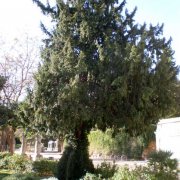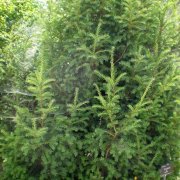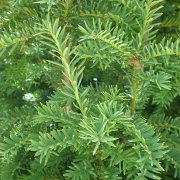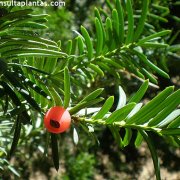Care of the tree Taxus baccata or European yew |
|
The genus Taxus, family Taxaceae, includes about 20 species of trees native to Europe, Asia, Sumatra, and Central and North America. Some species are: Taxus baccata, Taxus cuspidata, Taxus globosa, Taxus brevifolia, Taxus sumatrana. Common names: European yew, Common yew, English yew. This species is native to Europe, Northwest Africa and Southwest Asia. They are dioecious evergreen conifers that reach 15 meters (49.2 feet) in height. The bark is reddish in color and cracks with age. They can live for hundreds of years. The leaves are linear and dark green on the upper surface with 2 light lines on the underside. They bloom in late winter and early spring but the flowers are insignificant. The showy red fruits ripen in late summer. This very slow-growing plant is used to create hedges and windbreaks, as isolated specimens and as bonsai. It's important to note that the leaves and seeds are very poisonous if swallowed. Taxus baccata can grow in full sun, semi-shaded, and shaded exposures. It resists frost very well. Common yew grows in any type of soil (even calcareous) but prefers a well-drained and fresh substrate. Planting and transplanting are done in the fall or spring. Water regularly so that the substrate is always slightly damp. English yew does not resist prolonged drought or excess watering. Fertilize in autumn with manure or compost. European yew tolerates pruning well to shape and control growth. Taxus baccata is a plant quite resistant to pests and diseases but can be attacked by fungi if water accumulates in the roots. Too acidic soil causes the leaves to turn yellow. Common yew is propagated from cuttings in late summer or early fall and from seeds sown in spring but can take 2-3 years to germinate. |
Images of the tree Taxus baccata or European yew |
Find plants
Taxus baccata or European yew | Care and Growing
© 2025 FavThemes



